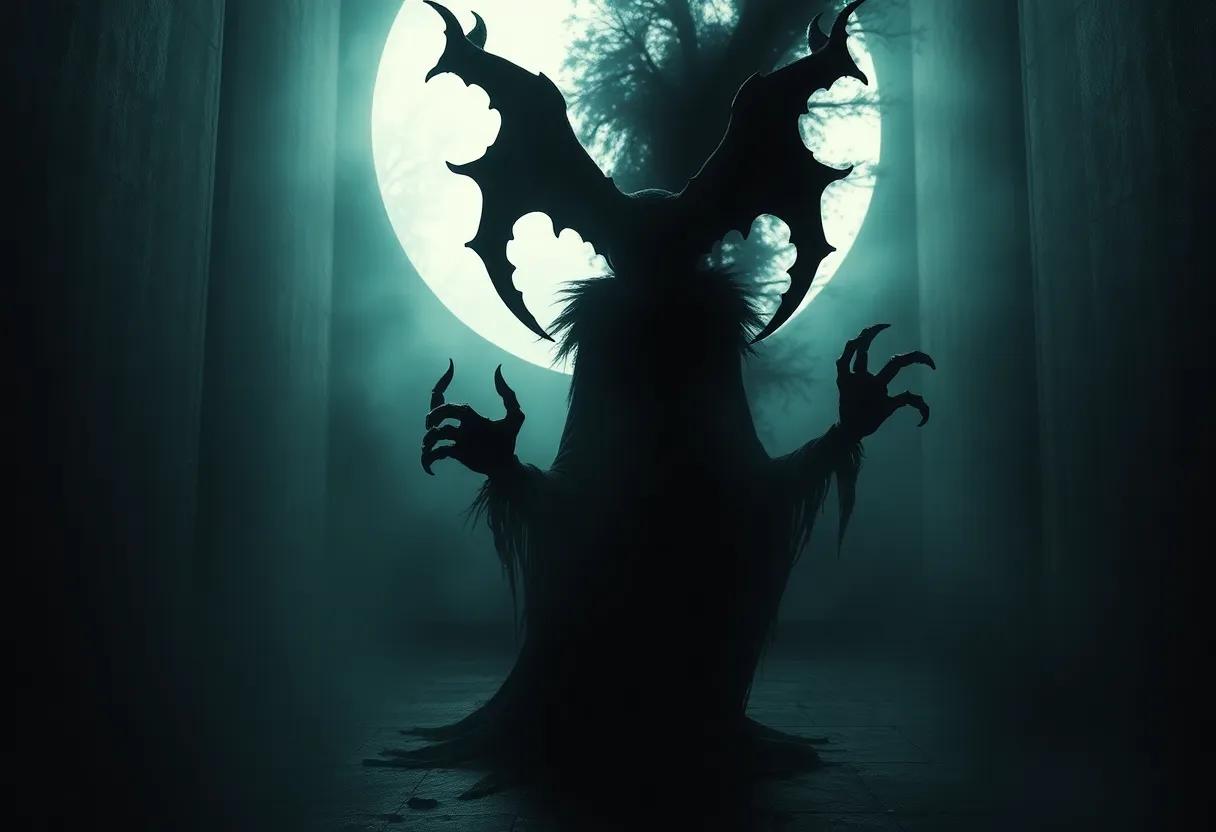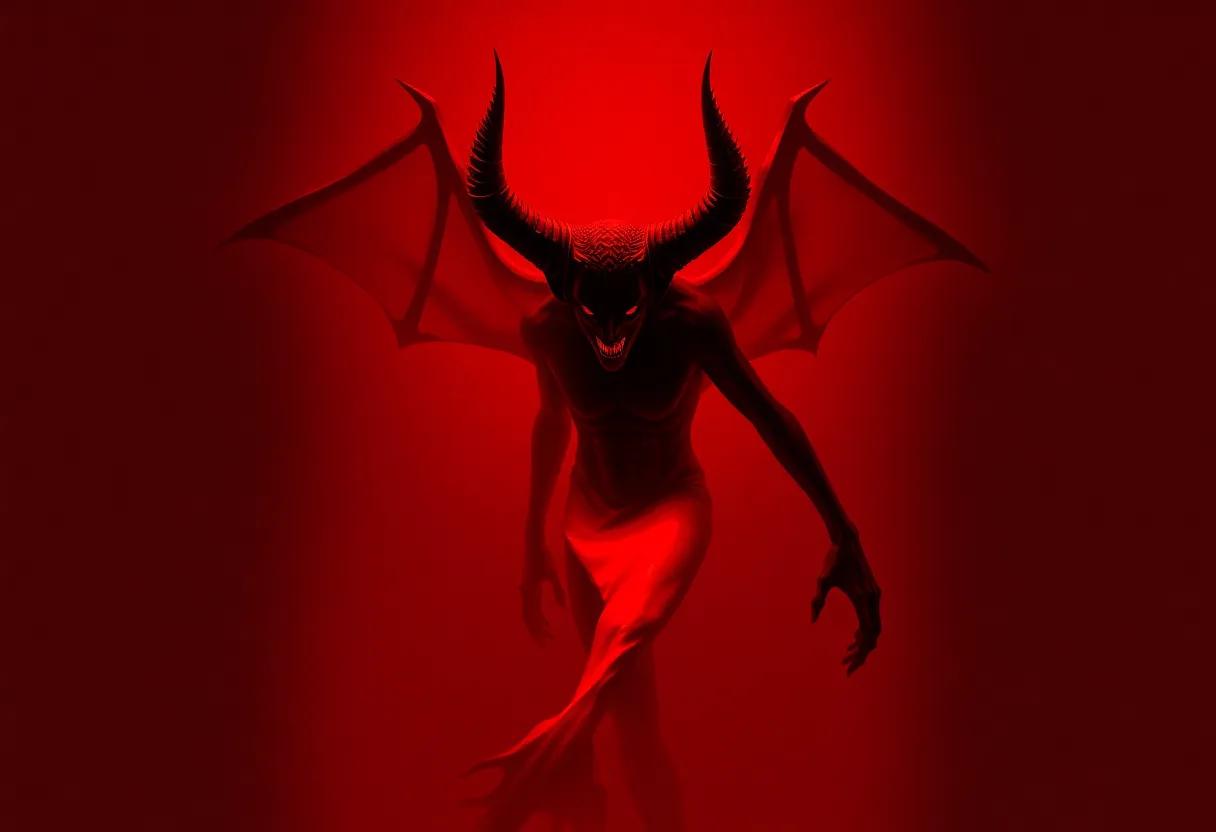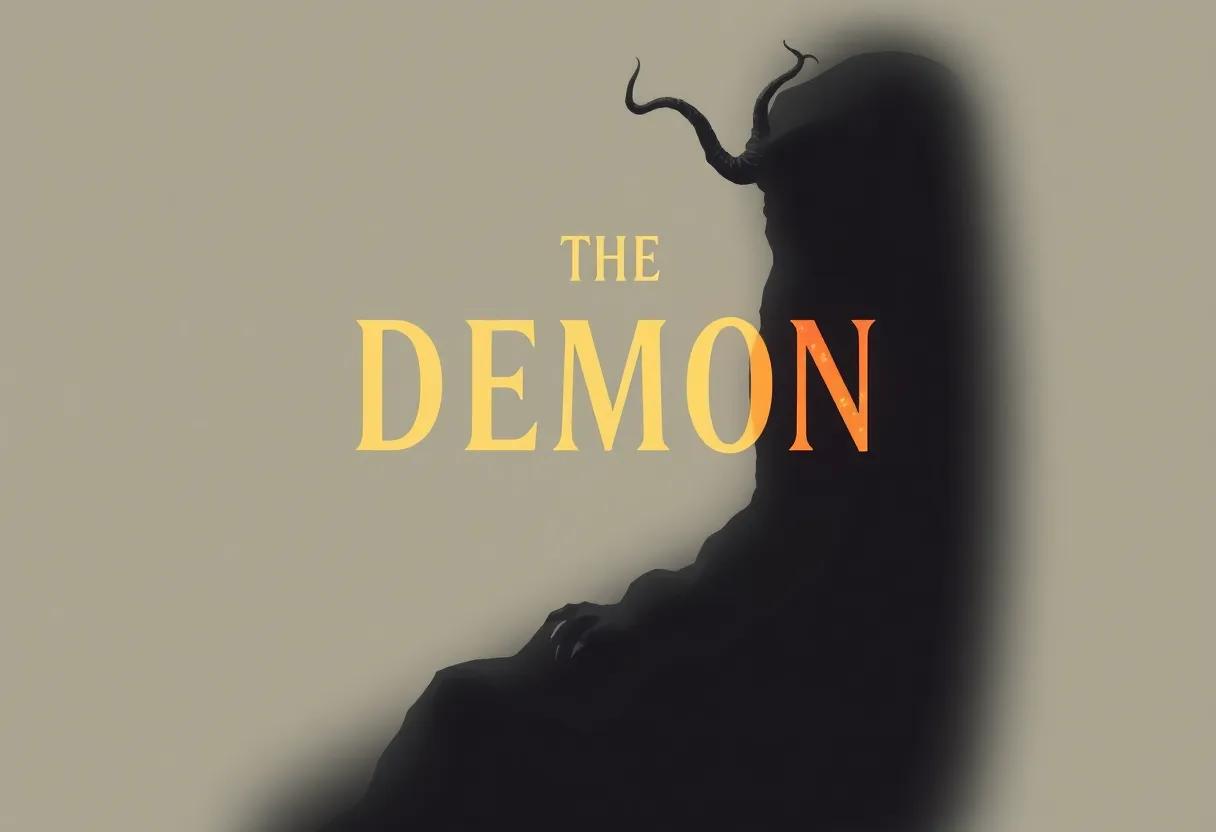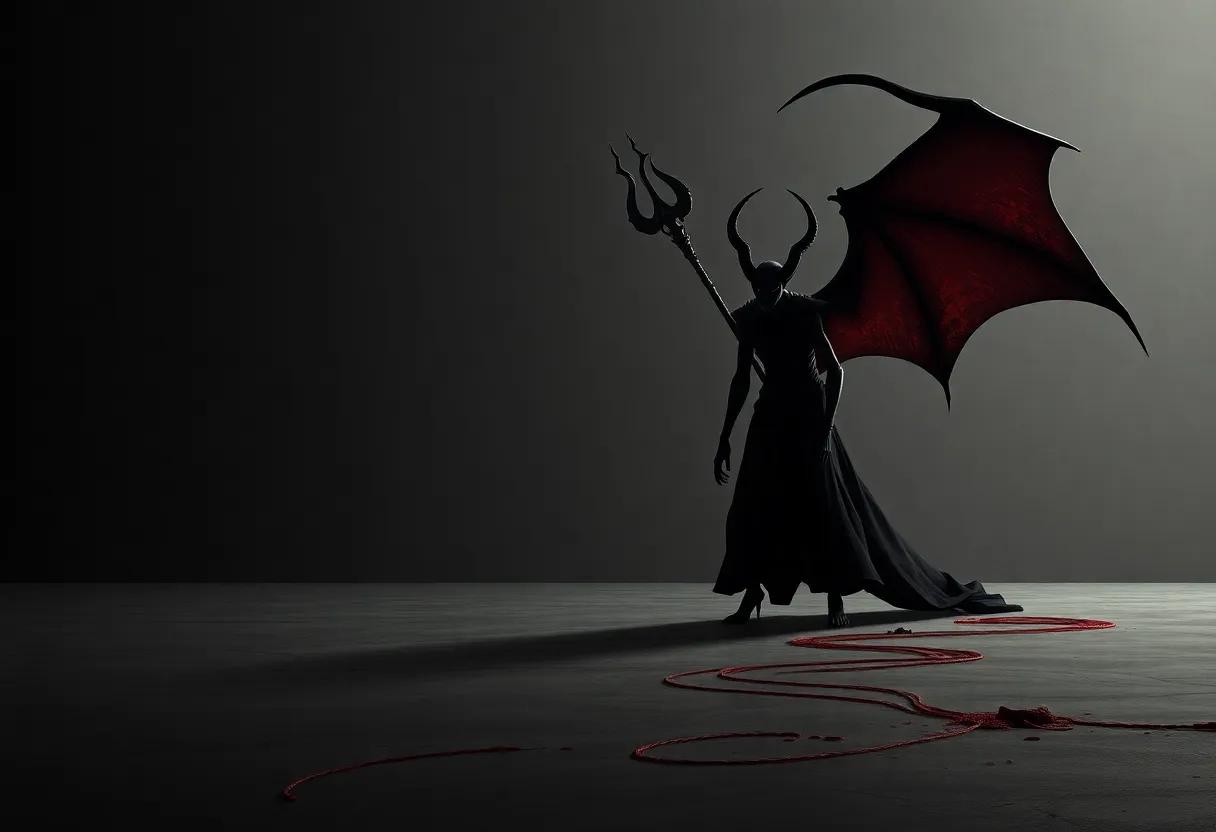In the shadowy corridors of human consciousness,few authors dare to venture as boldly as Hubert Selby Jr. does in his haunting novel, The Demon. A labyrinthine exploration of despair and desire, this work peels back the layers of darkness that often dwell beneath the surface of everyday existence. Unveiling Darkness: A Thoughtful Review of Hubert Selby Jr.’s The Demon embarks on a journey through Selby’s raw and unflinching narrative, inviting readers to confront the unsettling truths woven into his prose. This review aims to navigate the complexities of the novel-its themes, style, and emotional resonance-while maintaining a balanced perspective on its place within contemporary literature.
Unraveling the haunting atmosphere and vivid imagery that define the unsettling world of The Demon
selby Jr.’s mastery lies in his ability to construct an atmosphere thick with unease, where every shadow seems to pulse with hidden meaning. The streets, the rooms, and even fleeting moments are painted with such stark clarity that the world of The Demon lingers long after the last page is turned. Through his prose, the reader is ensnared in an oppressive ambiance that mirrors the protagonist’s inner turmoil, blurring the lines between reality and hallucination. This vivid imagery evokes not just sight but a sensory entrapment,where darkness feels tactile and silence screams.
Key elements contributing to this unsettling realm include:
- Symbolic Urban Decay: the crumbling cityscape becomes a metaphor for moral and psychological collapse.
- Visceral sensory Details: smells, textures, and sounds are described with gripping intensity, making the discomfort palpable.
- Fragmented Narrative Flow: Selby’s nonlinear storytelling mimics the chaotic mental state of his characters.
| Mood | Imagery | Effect |
|---|---|---|
| Bleak | Faded streetlamps flickering in fog | Creates a sense of impending doom |
| Claustrophobic | Crowded, narrow apartments with peeling wallpaper | Amplifies feelings of entrapment |
| Disorienting | Shifting perspectives and nightmarish visions | Blurs reality, fostering unease |
Exploring complex characters whose moral ambiguities challenge the reader’s perceptions of good and evil
Hubert Selby Jr.’s The Demon masterfully delves into the labyrinth of human nature, presenting characters who defy simplistic labels of good and evil. These individuals inhabit a liminal space, navigating personal turmoil and societal pressures that blur moral boundaries. Readers encounter protagonists whose actions provoke discomfort, yet evoke empathy, forcing us to confront uncomfortable truths about the motivations behind their choices. In this narrative, darkness isn’t a mere external force but an intrinsic part of the psyche, challenging the conventional dichotomy of hero and villain.
Key facets of these ambiguous characters include:
- Internal conflict: A constant struggle between self-destructive urges and a yearning for redemption.
- Contextual morality: Actions framed by backgrounds filled with trauma, addiction, and desperation.
- Unstable loyalties: Relationships that twist and turn,reflecting the unpredictability of human bonds.
| Character | Moral Dilemma | reader’s Perception Shift |
|---|---|---|
| Hermes | Violence justified by love | From menace to tragic hero |
| Lucinda | Betrayal as survival | From villainy to vulnerability |
| Sam | Self-sabotage vs. self-preservation | From delinquent to misunderstood |
The narrative structure and pacing that build tension and immerse readers in a relentless psychological journey
Selby’s masterful command over narrative structure in the Demon is a cornerstone for the unsettling atmosphere that grips the reader from first page to last. The novel’s pacing is deliberately uneven, mirroring the chaotic mind of its protagonist. Moments of frenetic intensity are suddenly punctuated by haunting lulls, creating a rhythm that feels both natural and disorienting. This push and pull effectively mimics the ebb and flow of escalating psychological torment, ensuring the reader wades deeper into the shadows of the human psyche. Through interwoven timelines and fragmented memories, selby prevents any predictable linear progression, compelling readers to actively piece together the jigsaw of suffering and despair.
Several techniques work in concert to generate this overwhelming sense of immersion:
- Fragmented chronology: Time is fluid, emphasizing the protagonist’s fractured mental state.
- Stream-of-consciousness passages: These invite readers directly into the protagonist’s turbulent thoughts.
- Brief, staccato sentences: Rapid bursts of tension contrasted with longer, hauntingly descriptive paragraphs.
- Unpredictable shifts: Sudden changes in tone and focus mimic the unpredictability of psychological breakdown.
| Technique | Effect |
|---|---|
| Nonlinear Narrative | Disorients & deepens engagement |
| Rhythmic pacing | Reflects internal chaos |
| Interior Monologue | Creates intimacy with protagonist |
| Contrasting Sentence Lengths | Builds urgency and release |
Themes of addiction,despair,and redemption woven intricately throughout Selby’s raw and uncompromising prose
selby’s narrative plunges deep into the turbulent psyche of his characters, capturing the suffocating grip of addiction with unflinching honesty. His prose refuses to sanitize or soften the painful realities; instead, it confronts readers with visceral descriptions that echo the chaos within. The despair that permeates The Demon is not mere background but a living,breathing force that shapes every decision,every fleeting moment of hope,and every crushing defeat. Through this vivid panorama of human vulnerability, Selby constructs a haunting tableau where darkness is not just a theme but an omnipresent atmosphere.
Amidst the bleakness, redemption emerges not as a fairy-tale cure but as a complex, frequently enough elusive journey. Selby’s characters grapple with the possibility of salvation in ways that feel deeply authentic-marked by setbacks, raw self-awareness, and reluctant courage. The following table highlights key emotional currents that alternate throughout the narrative, revealing the intricate balance Selby achieves between despair and the fragile glimmers of redemption:
| emotion | Representation | Impact |
|---|---|---|
| Addiction | endless cycles of craving and self-destruction | Entraps characters in spirals of isolation |
| Despair | Sense of hopelessness and loss | Colors the narrative with palpable tension |
| Redemption | Flickers of self-forgiveness and change | Offers subtle, imperfect pathways towards healing |
Selby’s mastery lies in his refusal to provide easy answers, rather inviting readers to shoulder the weight of his characters’ journeys. It is in this tension-between surrender and striving-that The Demon resonates with a haunting emotional truth.
How Selby’s distinct voice and stylistic choices create a powerful emotional resonance in The Demon
Selby’s narrative voice in The Demon is nothing short of haunting, weaving a tapestry of raw emotion through his unconventional stylistic choices. His prose frequently enough forsakes traditional punctuation and syntax, mirroring the chaotic mental state of his protagonist and pulling readers into a visceral experience. This intentional fragmentation forces the audience to confront discomfort head-on, allowing the intensity of anguish, despair, and longing to pulse powerfully from the page. The repetition of phrases and the rhythmic ebb and flow of his sentences mimic the relentless grip of addiction and mental turmoil, creating an immersive atmosphere of psychological unrest. his voice is a mirror of internal disarray, evoking a profound empathy that transcends mere observation.
The stylistic boldness extends to Selby’s use of minimalistic yet potent imagery and stark contrasts between tenderness and cruelty. This interplay not only intensifies emotional stakes but also reflects the duality within the human psyche. Consider the elements that define Selby’s style:
- Stream-of-consciousness narration that blurs reality and hallucination
- Repetitive motifs enhancing the sense of cyclical suffering
- Direct, unfiltered language that confronts social taboos without apology
- Fragmented dialog capturing discord and isolation
Together, these create an atmosphere where readers are less observers and more participants in the protagonist’s fragmented world, stirring a complex emotional resonance that lingers long after the final page.
| Stylistic Element | Emotional Impact |
|---|---|
| Broken Syntax & Punctuation | Conveys confusion and urgency |
| Repetitive Phrasing | Emphasizes obsession and despair |
| Unfiltered Language | Challenges reader comfort, evokes rawness |
| Fragmented Dialogue | Highlights isolation and misunderstanding |
The interplay of symbolism and metaphor that enriches the novel’s dark and introspective narrative layers
Throughout The Demon, Selby Jr. masterfully intertwines symbolism and metaphor to build a tapestry of meaning that penetrates the surface of his characters’ bleak realities. The ever-present shadow motifs, as an example, are not merely atmospheric devices but serve as extensions of the protagonist’s fractured psyche, embodying the inescapable nature of inner turmoil. These shadows, shifting and mercurial, blur the distinction between external darkness and internal despair. Similarly, recurrent images of decay – whether through crumbling urban landscapes or deteriorating bodies - reinforce the novel’s meditation on mortality and the disintegration of identity.
This complex layering is further enriched by a series of potent metaphors that resonate with the reader long after the final page. The illusion of light symbolizes fleeting hope amidst overwhelming gloom, while the animalistic references parallel the primal instincts lurking beneath human sophistication. To illuminate this interaction, consider the table below outlining key symbols and their metaphorical significances:
| Symbol | Metaphorical Meaning |
|---|---|
| Shadow | Fragmented self, hidden fears |
| decay | The inevitability of death and loss |
| Light | Ephemeral hope, fragile redemption |
| Animal imagery | Instinctual drives, untamed emotions |
By weaving these symbolic threads into the very fabric of the narrative, the novel transcends a straightforward story of despair, evolving instead into an immersive exploration of human fragility. Readers are invited to decode these images and metaphors, unlocking deeper chambers of meaning tucked into selby’s stark prose. It is this dialectic between the literal and the figurative that amplifies the novel’s introspective gravity, making The Demon a compelling study in darkness and self-examination.
Comparing The demon with Selby’s other seminal works to understand his evolution as a writer and storyteller
Hubert Selby Jr.’s journey as a writer reveals a profound transformation in both narrative approach and thematic exploration, with The Demon standing as a particularly intense marker on that path. Unlike Last Exit to Brooklyn, where Selby employs a fragmented, almost raw portrayal of urban disenchantment, the Demon delves deeper into the psychological terrain, crafting a narrative that is at once intimate and harrowing. His earlier works often rely on external chaos to reflect internal turmoil, but in The Demon, there is a palpable shift toward a more introspective and claustrophobic atmosphere, underscoring his evolution toward dissecting the human psyche’s darker recesses with unsettling precision.
When juxtaposed with Requiem for a Dream, which showcases Selby’s mastery in depicting addiction’s brutal grip with relentless pacing, The Demon opts for a slower, more contemplative cadence, inviting readers to wrestle with moral ambiguity and existential dread. This contrast highlights Selby’s growing confidence in manipulating narrative tempo to mirror complex emotional states. Below is a brief comparison that captures this progression:
| Work | Themes | Narrative style | Emotional Focus |
|---|---|---|---|
| Last Exit to Brooklyn | Urban despair, violence | fragmented, raw | External chaos |
| Requiem for a dream | Addiction, dreams vs. reality | Relentless, fast-paced | Psychological grip |
| The Demon | Internal demons, moral ambiguity | Introspective, slow burn | existential dread |
Target audience recommendations highlighting who will find the Demon both engaging and thought-provoking
The Demon is a compelling dive into the raw and often unsettling depths of human obsession, making it a perfect read for those who crave literature that challenges the mind and stirs the soul.Readers who appreciate complex, flawed characters wrestling with their inner demons will find Selby’s work both gripping and illuminating. Additionally, fans of psychological explorations, dark realism, and narratives that blur the line between despair and redemption will resonate with the novel’s intense, unflinching honesty.
For those who seek more than just a story, The Demon offers a rich terrain for philosophical and existential reflection. Ideal for book clubs, literary scholars, and contemplative readers who enjoy dissecting themes such as addiction, identity, and self-destruction, this novel invites deep conversation and personal introspection. Below is a speedy guide to who will most benefit from engaging with Selby’s haunting masterpiece:
- Psychological thriller enthusiasts looking for a character-driven narrative
- Readers interested in the human psyche and addiction struggles
- Students and scholars studying modern American literature or themes of existentialism
- Book clubs seeking thought-provoking discussions
- Fans of dark, literary realism that confront uncomfortable truths
| Reader Type | Why it Resonates |
|---|---|
| Philosophical Readers | Explores themes of self-destruction and redemption |
| Psychology Students | Detailed portrayal of addiction and mental turmoil |
| Literary Critics | Rich in stylistic complexity and narrative depth |
| Casual Readers | Challenging but rewarding, for those who favor intensity |
Critical reflections on the novel’s challenging content and its impact on contemporary literary conversations
Hubert Selby Jr.’s The Demon unapologetically delves into the bleakest recesses of the human psyche, confronting readers with themes that many might find unsettling or even transgressive. The novel’s raw portrayal of addiction, mental anguish, and existential despair pushes literary boundaries, demanding an active engagement rather than passive consumption. Through a fragmented narrative style and unfiltered language, Selby challenges the sanitized conventions of storytelling, inviting readers to wrestle with the darker facets of existence that mainstream literature often overlooks or glosses over. This stark approach ignites critical debates about the role of discomfort in art and whether literature’s purpose is to merely entertain or to provoke profound introspection.
Contemporary literary conversations continue to grapple with The Demon’s
- How far can fiction delve into trauma without exploiting it?
- What responsibilities do authors have toward their readers when exposing challenging truths?
- In what ways does The Demon reflect or distort the realities of marginalized experiences?
These queries situate Selby’s work at the heart of ongoing dialogues about literature’s power and limitations. Below is a concise overview of key thematic tensions sparked by the novel, framed to encourage deeper analysis:
| Theme | Literary Impact | Reader Challenge |
|---|---|---|
| Psychological Realism | Breaks linear storytelling to mimic mental fragmentation | Demands patience and emotional resilience |
| Dark Subject Matter | Confronts taboo with brutal honesty | Triggers discomfort; forces reflection on societal neglect |
| Moral Ambiguity | Resists clear-cut judgments about characters | invites complex ethical consideration rather than simple condemnation |
The cultural and historical context surrounding The Demon’s publication and its relevance today
Emerging from the turbulent socio-political landscape of the late 1970s, The Demon by Hubert Selby Jr. is steeped in the anxieties and existential dread of post-Vietnam America. At a time when the nation grappled with disillusionment, the rise of urban decay, and the fracturing of traditional values, Selby’s unflinching narrative mirrored these realities through the psychological torment of his protagonist, Harry White. The novel’s raw exploration of addiction, mental illness, and spiritual despair challenged the sanitized depictions of American life prevalent in literature, carving out a space for brutal honesty and vulnerability. Its cultural meaning is underscored incidentally speaking it laid bare the underside of the American dream, becoming a testament to an era plagued by uncertainty and moral ambiguity.
Today, The Demon’s resonance remains powerful, reflecting modern society’s ongoing struggles with isolation, identity, and internal conflict. Its themes invite readers to confront uncomfortable truths about the human condition - truths wrapped in cycles of darkness and fleeting hope. The novel’s relevance can be distilled into a few enduring points:
- Addiction and Mental Health: Highlighting stigmas that persist even in contemporary dialogue.
- societal Alienation: Echoing the increasing sense of disconnect in a hyperconnected digital age.
- Spiritual Despair and Redemption: Provoking reflections on existential purpose and recovery.
| Theme | 1970s Context | Relevance Today |
|---|---|---|
| Addiction | Post-war substance abuse rise | ongoing opioid crisis and mental health awareness |
| Urban Despair | Economic decline and disinvestment | gentrification and homelessness debates |
| Spiritual Crisis | Erosion of traditional belief systems | Search for meaning in a secular world |
Writing techniques that showcase Selby’s ability to portray internal struggles with unflinching honesty
Selby’s prose cuts through the veneer of sanitized storytelling, plunging readers into the raw, unfiltered core of human despair. his sentences frequently enough mirror the chaotic rhythms of troubled minds-fragmented, repetitive, and sometimes painfully brief-allowing us to experience the psyche’s turmoil firsthand. His use of stream-of-consciousness technique doesn’t merely describe internal conflict; it embodies it, immersing the reader in a visceral dialogue between hope and ruin. This style strips away layers of artifice, making every word a pulse of honesty, every pause a breath held in agony.
- Unrelenting emotional exposure: characters reveal their darkest thoughts without censorship.
- Minimalist yet powerful diction: Language that is stripped down but charged with intensity.
- Symbolism intertwined with raw confession: Abstract imagery woven directly into internal monologues.
Beyond technique, Selby’s commitment to portraying suffering without sentimentality fosters a grim authenticity rarely seen in literature. his characters are not pedestals of tragic heroism but flawed souls wrestling with despair in its ugliest forms. Through fragmented narratives and unversed dialogues, Selby captures the internal battlefields of addiction, guilt, and alienation with unflinching precision, refusing to offer easy redemption or moral absolution.The following table highlights key elements that reinforce this portrayal:
| Technique | Effect on Portrayal | Reader Impact |
|---|---|---|
| Internal Monologue | Dives straight into characters’ thoughts | Feels immediate and intimate |
| Repetition | Mirrors obsessive mental loops | Creates unease and empathy |
| Disjointed Syntax | Reflects psychological fragmentation | evokes confusion and pain |
Discussion on how The Demon pushes the boundaries of traditional genre classifications in literature
Hubert Selby Jr.’s The Demon boldly rejects the rigid boxes of genre, weaving together elements that traditionally belong to separate literary realms. At its core, the novel blends psychological horror with raw existential drama, creating a tapestry that defies simple categorization. Rather than relying on conventional horror tropes or straightforward narrative structures, Selby immerses readers in a fragmented, visceral experience where reality blurs seamlessly with hallucination and despair.This hybridization challenges readers to reconsider what it means to label a work strictly as “horror,” “literary fiction,” or “psychological thriller,” instead encouraging a more fluid interpretation of genre itself.
The novel’s stylistic experimentation further pushes these boundaries. Its unconventional syntax, intense first-person perspective, and rhythmic repetition act as both a narrative device and a mood amplifier-qualities more commonly associated with poetry or stream-of-consciousness literature than traditional genre fiction. To illustrate the multifaceted nature of The Demon, consider the following aspects that defy classification:
- Psychological descent intertwined with surreal elements
- Literary prose merging with fragmented,almost experimental forms
- Themes of addiction,self-destruction,and redemption tackled through both gritty realism and abstract symbolism
- Emotional rawness presented in a style that disorients as much as it captivates
| Traditional Genre | Selby’s Approach |
|---|---|
| Horror | Focus on internal terror & psychological decay |
| Literary Fiction | Experimental language challenging narrative norms |
| Psychological Thriller | non-linear timeline & blurred reality |
| Poetic Expression | Repetitive phrasing & rhythmic pulse |
A brief but insightful look at Hubert Selby Jr’s life, influences, and enduring legacy in American literature
Hubert Selby Jr. carved a unique niche in American literature through his raw, unflinching portrayal of society’s underbelly. Born and raised in the gritty streets of Brooklyn, Selby’s early life was marred by illness and hardship, factors that profoundly shaped his narrative voice. Eschewing conventional structure, his prose is often fragmented and elliptical, mirroring the fractured realities of his characters. His influences spanned from the existential despair found in Dostoevsky’s works to the visceral immediacy of jazz and the Beat Generation’s rebellious spirit. This amalgamation birthed a literary style that is both poetic and brutal, unafraid to confront the darkest corners of human experience with empathy and depth.
Selby’s legacy continues to ripple across the literary landscape, resonating especially with those drawn to narratives that refuse sanitization. His works not only challenge readers to reckon with uncomfortable truths but also redefine the boundaries of narrative form and language. The table below highlights some key elements that distinguish his impact:
| Aspect | characteristic | Enduring Impact |
|---|---|---|
| Narrative Style | Fragmented, poetic prose | Inspired experimental storytelling |
| Subject Matter | Urban decay, addiction, despair | Expanded scope of literary realism |
| Cultural Influence | Underground and countercultural movements | Cult following and critical reappraisal |
- Innovative use of language that breaks traditional syntax rules.
- Unvarnished depictions of pain and human fragility.
- Influence on filmmakers and writers seeking authentic voices.
In peeling back the layers of The Demon, Hubert Selby Jr.offers readers not just a story,but an experience-a raw,unfiltered glimpse into the complexities of human despair and resilience. As this review draws to a close, it becomes clear that Selby’s work resists easy categorization or simple answers. Instead, it invites contemplation, challenging us to confront the shadows lurking within and around us. Whether embraced for its brutal honesty or wrestled with for its harrowing themes, The Demon stands as a testament to Selby’s unwavering commitment to exploring the depths of the human condition-an invitation to readers to engage with darkness in the hopes of emerging, perhaps, a little more understood.









